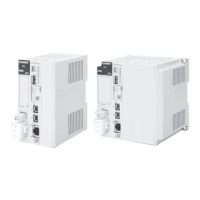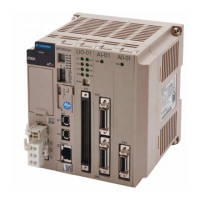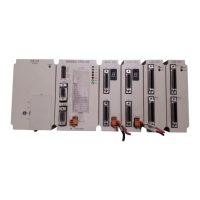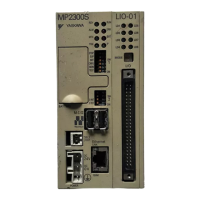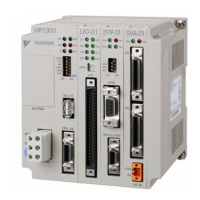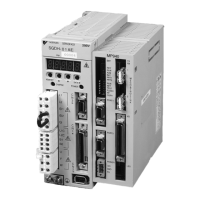2.12 Communications with a Windows PC (Visual Basic Application)
Using Automatic Reception with the MP3000 as a Slave
2-331
'---- Get the MP3000’s IP address. ----
DstPort = Val(TextBox10.Text)
'---- Get the connection type ----
TransPort = ComboBox1. SelectedIndex ' 0:TCP 1:UDP
'---- Open a TCP/UDP port ----
rc = MemobusMasterMain(TransPort, MyIP, MyPort, DstIP, DstPort)
If rc = 0 Then
MsgBox (“Socket created”)
Else
MsgBox (“Socket creation failed”)
End If
End Sub
Private Sub Command2_Click(ByVal sender As System.Object, ByVal e As System.EventArgs) Han-
dles Command2.Click
’Timer processing --- Start
Timer1.Interval = 100 '100ms
Timer1.Enabled = True
End Sub
Private Sub Command3_Click(ByVal sender As System.Object, ByVal e As System.EventArgs) Han-
dles
Command3.Click
’Timer processing --- Stop
Timer1.Enabled = False
End Sub
’The following process starts the Timer and executes every 100 ms
Private Sub Timer1_Tick(ByVal sender As System.Object, ByVal e As System.EventArgs) Handles
Timer1.Tick
Dim rc As Short
SFC = &H9 ’Read contents of hold registers (extended)
CPUNum = 1 ’Set the remote device as CPU1
Adr = 0 ’Set the first address to MW00000
DataNum = 10 ’Read 10 words from the first address
'---- Create Extended MEMOBUS send data ----
MkCmdData(SFC, CPUNum, Adr, DataNum, Ssbuf)
'---- Send Extended MEMOBUS command and receive response ----
rc = MemobusMsg(TransPort, Ssbuf, Srbuf)
If rc <> 0 Then
Timer1.Enabled = False ’Timer processing --- Stop
closesocket(0) ’Close the socket
WSACleanup() ’Release the Winsock.DLL
End If
'---- Reflect values in the register monitor ----
’Add code to display the read register values
End Sub
∗
∗
End Class
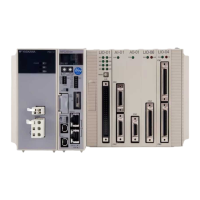
